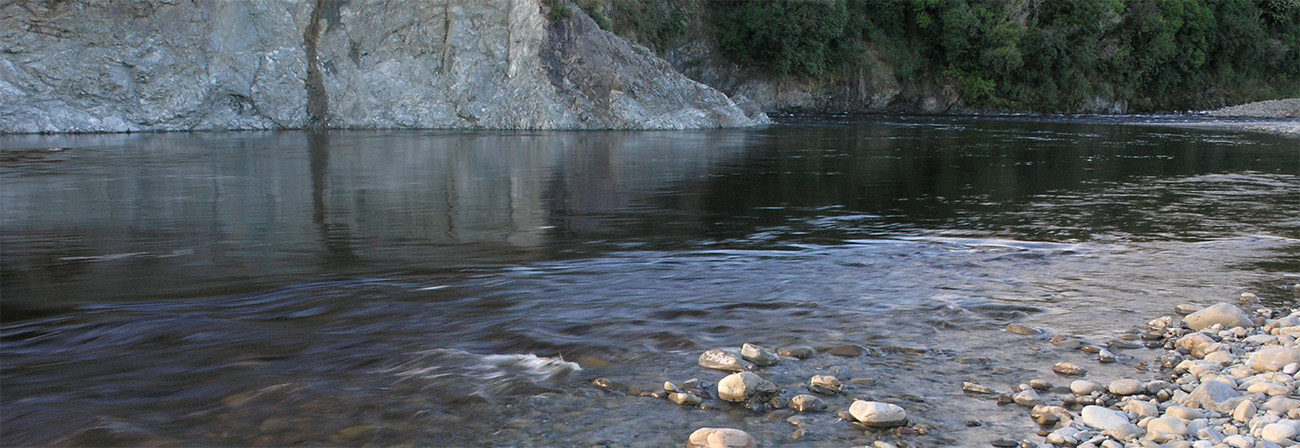Thirty years ago most single hand fly rods had progressive or parabolic tapers, which often meant owning two models - a stiffer faster rod for distance and casting weight, and a softer slower rod for close presentation work – or settling on a compromise. With developments in technology making higher modulus carbon and compound tapers, the recent trend for general purpose 9 ft fly rods has been fast action, with soft tips to load the rod in close, and powerful mid and butt sections for casting long and heavy, making these rods true all-rounders.
Micro-Skagit heads are supposed to cast best on medium-fast action rods with progressive tapers and stiffish tips that transfer good flex through to the mid-section. Rods of this design load deeper, transfer energy more efficiently and provide better feel during the relatively slow sweep required for an effective water-loaded sustained-anchor Skagit cast.
My experiments with standard 5 wt and 7wt single-hand outfits showed that slower action deeper flexing rods made learning to cast a longer more demanding head (e.g. Skagit Scout) easier, because they were not as finicky about timing. When timing was close to perfect, fast tip flexing rods cast further - although maintaining perfect timing throughout a day’s fishing is a tall order.
While fast rods were less forgiving of timing error, they were more forgiving of head weight because they did not ‘bottom out’ when an extra 30 grains was added to the head or sink tip. But the story does not end there.
In 2019 I purchased a 5 wt 9.5 ft Sage X (597), which broke all the rules. Flexing deeply but recovering quickly, which until recently was unthinkable, this rod had both feel and speed, setting a new bar for ultimate Spey casting action. Single-hand Skagit-casting with this rod, I achieved significantly greater distance with noticeably less effort, as well as remarkable casting consistency.
Another rod I acquired in 2019 was a 5 wt Loomis NRX LP, which also had good flex through the tip and mid sections but with fast recovery, and which also proved to be an exceptional single-hand Skagit tool, albeit with a lighter head and tips than the Sage X-597. While good flex and fast recovery is ideal for Spey casting, a stiff butt section is great for single hand Skagit casting, as it increases power available from a haul.
Ideal rod length depends largely on the water and methods fished. Rod designers producing single hand Spey rods seem to agree that 10.25 ft is the optimal length for achieving distance with single-hand Spey-casts. But fishing is not just about distance, and considering that a longer rod requires a longer head + tip combination, a rod of this length would be a disadvantage when stripping streamers on a small to medium size river.
In my experience a 9 ft 5 wt rod is right for small to medium sized rivers, as it provides all the distance needed, requires less room to cast, and allows one to strip flies closer. Modern 5 wt rods have also enough grunt to handle trout over 5 lb, which are common in New Zealand.
A 9.5 or 10 foot 5 wt single hand rod is a good option for wide shallow rivers, and larger rivers in summer/autumn conditions when feeding fish will move further from the bottom for food. Advantages of a longer 5 wt rod include: easier roll casting, the option to use longer tips, greater distance and line control, more pulling power, and far better presentation than a 7wt outfit. They are nevertheless short enough to cast 11 -12 ft 180-200 grain Skagit heads, which have sufficient grains per foot to cast substantial flies and sink tips when required.
Seven weight rods are often required on deeper fast flowing rivers - e.g. the Tongariro in winter - to cast the T-14 tips and heavy flies required to get down to the fish, and also to hold good trout in strong water. Heavier outfits are also less impacted by wind. It might seem logical to increase rod length to accomodate longer heavy tips and also cast further, but as rod length increases, so does the effort required to make a single-hand Skagit-cast.
Single-hand Skagit-casting a head of 270 or 300 grains with a T-14 sink tip on a rod longer than 9.5 ft is not something I want to do all day. If a 7wt rod longer than 9.5 ft is required for Skagit fishing, I would recommend one that is at least 11 ft long that can be cast with two hands. In other words a 4wt or 5 wt Spey rod.
Single Hand Skagit - Science behind the magic |
|
| + | Where it all began |
| + | Head design |
| + | Sink tips |
| + | Casting heavy sink tips |
| + | Running lines |
| + | Reels |
| + | Rods |
| + | Intermediate heads |
| + | Favourite outfits |
| + | Conclusions |
| + | Shootout of 12 Skagit Heads I tested |
| + | Table of Sink Tip Recommendations |
| + | Table of Lengths & Weights of Sink Tips |
Single hand Trout Spey : Getting started with a 9 ft 5wt rod |
|
| + | Getting started |
| + | Rods and Skagit heads |
| + | Sink tips for Skagit heads |
| + | Tippet for Skagit heads |
| + | |
| + | Hybrid heads |
| + | Floating tips for Skagit heads |
| + | Running lines |
| + | Cost effective approach |
| + | Learning to Spey cast |
| + | A final word |
